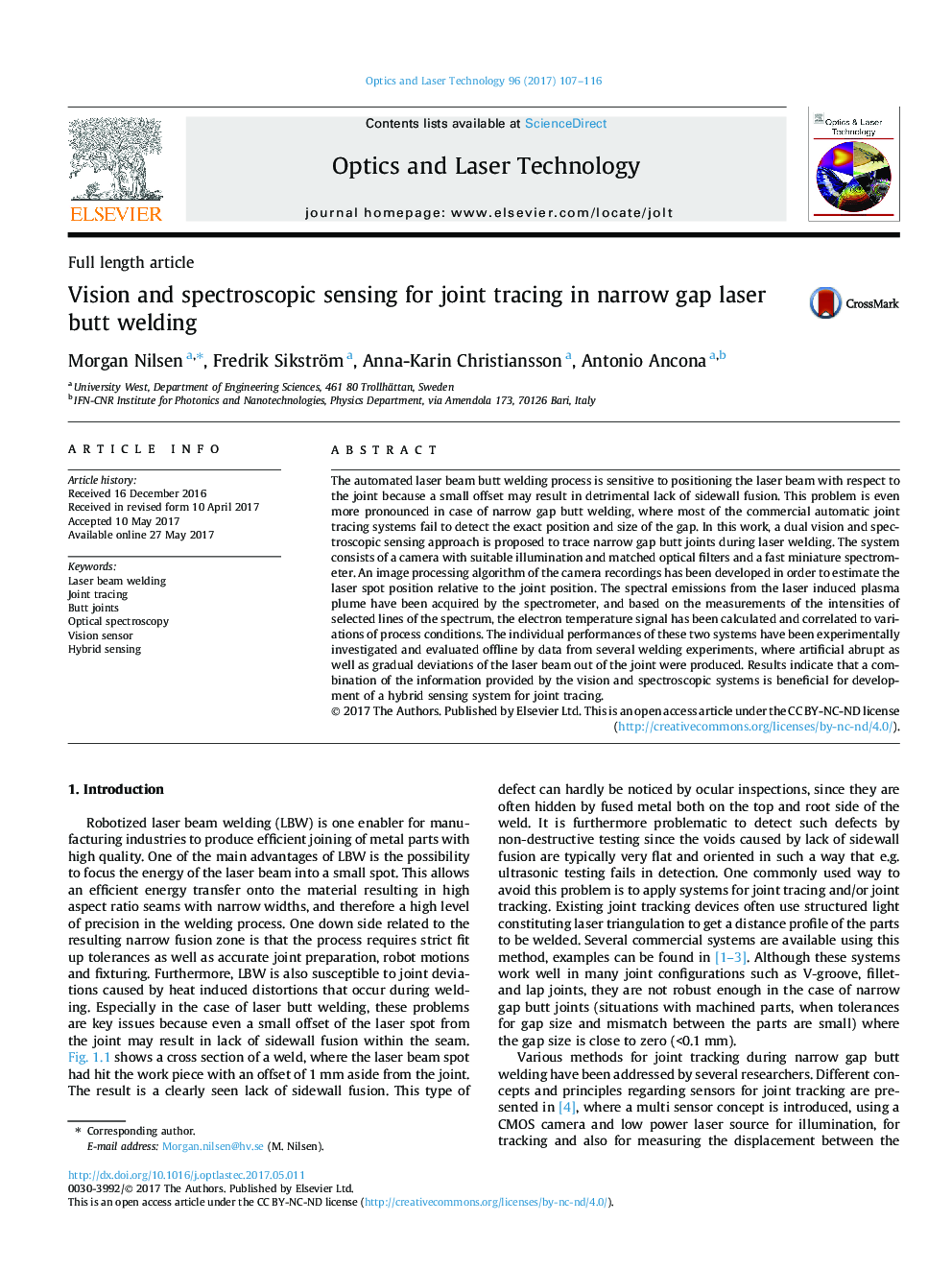| Article ID | Journal | Published Year | Pages | File Type |
|---|---|---|---|---|
| 5007194 | Optics & Laser Technology | 2017 | 10 Pages |
Abstract
The automated laser beam butt welding process is sensitive to positioning the laser beam with respect to the joint because a small offset may result in detrimental lack of sidewall fusion. This problem is even more pronounced in case of narrow gap butt welding, where most of the commercial automatic joint tracing systems fail to detect the exact position and size of the gap. In this work, a dual vision and spectroscopic sensing approach is proposed to trace narrow gap butt joints during laser welding. The system consists of a camera with suitable illumination and matched optical filters and a fast miniature spectrometer. An image processing algorithm of the camera recordings has been developed in order to estimate the laser spot position relative to the joint position. The spectral emissions from the laser induced plasma plume have been acquired by the spectrometer, and based on the measurements of the intensities of selected lines of the spectrum, the electron temperature signal has been calculated and correlated to variations of process conditions. The individual performances of these two systems have been experimentally investigated and evaluated offline by data from several welding experiments, where artificial abrupt as well as gradual deviations of the laser beam out of the joint were produced. Results indicate that a combination of the information provided by the vision and spectroscopic systems is beneficial for development of a hybrid sensing system for joint tracing.
Related Topics
Physical Sciences and Engineering
Engineering
Electrical and Electronic Engineering
Authors
Morgan Nilsen, Fredrik Sikström, Anna-Karin Christiansson, Antonio Ancona,
